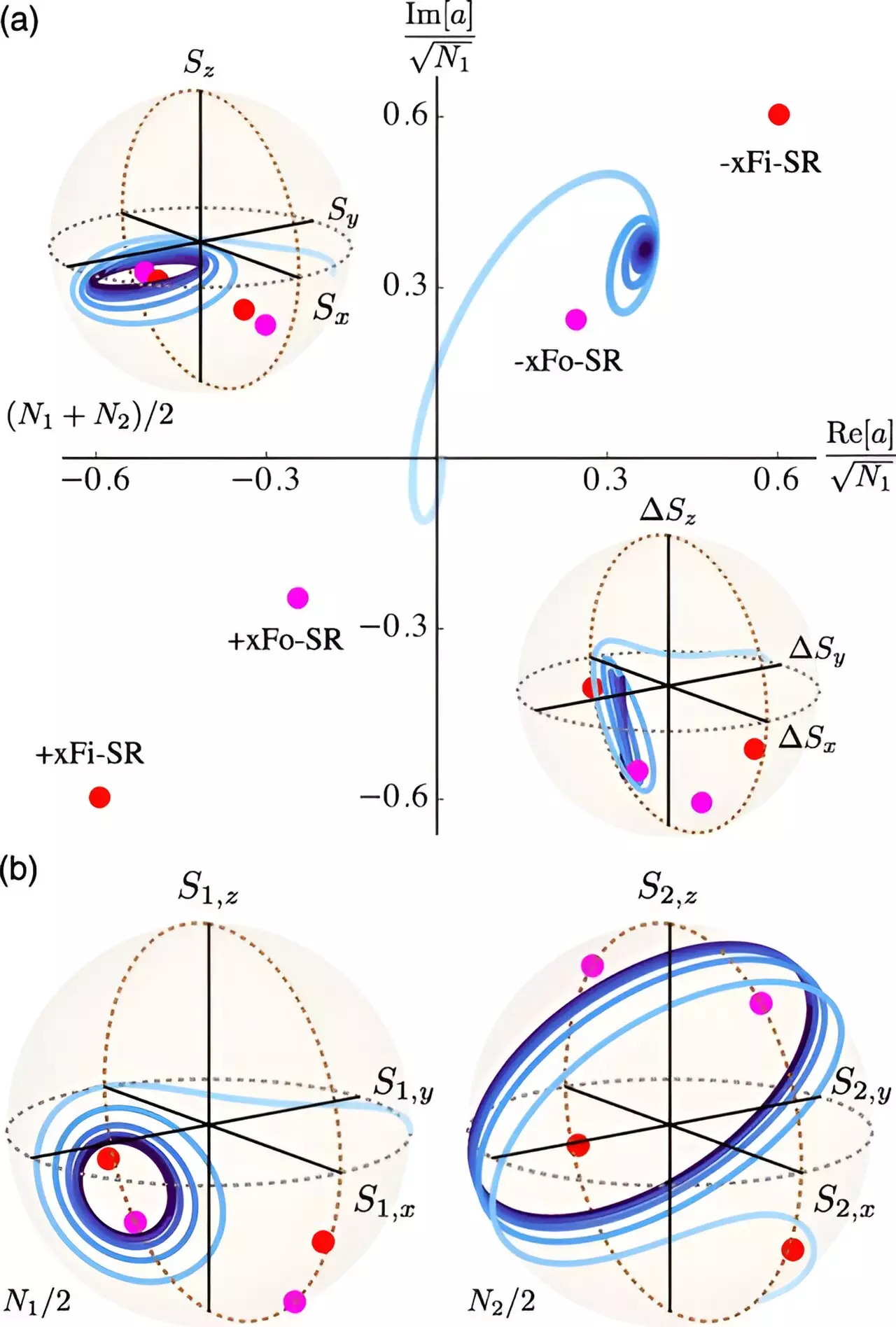Theoretical physicist Farokh Mivehvar has delved into the intricate interactions of atoms emitting light within a quantum cavity. This optical device consists of two high-quality mirrors facing each other, confining light within a small area for an extended period. The phenomenon of superradiance, a surprising occurrence in quantum optics, can be comprehended by envisioning atoms as tiny antennas emitting light under specific conditions.
The Collective Behavior of Atoms
When individual atoms are located far apart and thermally excited, they emit light independently. However, when atoms are in close proximity, their atomic antennae synchronize, resulting in the emission of light with an intensity proportional to the square of the number of atoms. This collective behavior can be likened to multiple atoms forming a giant antenna, leading to more efficient light emission.
In his recent research published in Physical Review Letters, Mivehvar explores the interaction of two groups of atoms within a quantum cavity. Each group contains a specific number of atoms (N1 and N2) closely positioned to emit light superradiantly. The challenge lies in understanding how these two giant atomic antennae can emit light simultaneously.
Complex Emission Processes
Mivehvar’s study reveals two distinct ways in which the two giant antennae interact. In the first scenario, they cooperate to form a single super-giant antenna, enhancing superradiant light emission. Conversely, in the second scenario, they compete destructively, leading to the suppression of superradiant light emission. Interestingly, when both ensembles have an equal number of atoms, superradiant light emission is completely inhibited.
The model and predictions derived from this research can be applied in modern cavity/waveguide-quantum-electrodynamics experiments. Furthermore, these findings may have implications for the development of superradiant lasers in the future. By understanding the complex interactions of atoms within quantum cavities, researchers can explore new avenues in quantum optics and quantum-electrodynamics experiments.


Leave a Reply